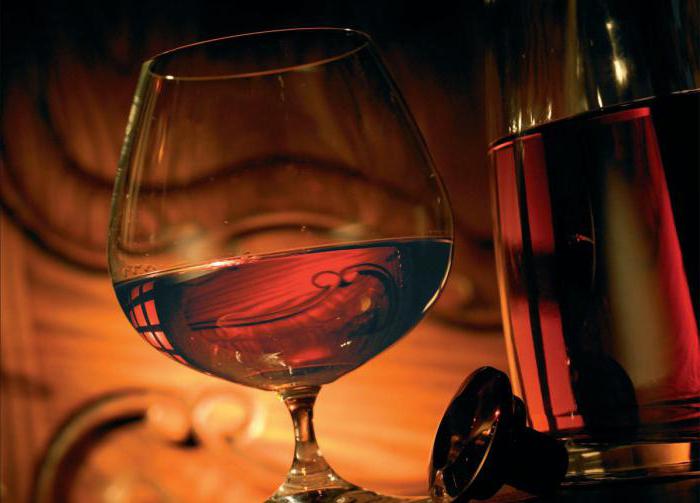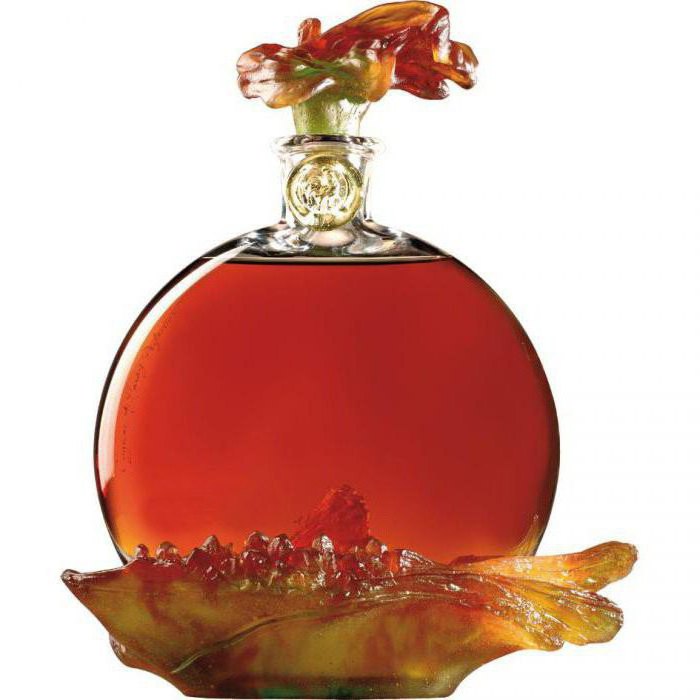Cognac is a noble drink named after a town in one of the southwestern provinces of France, where its history began. This is an original French strong alcoholic product obtained by distillation of white wines and further aging in oak barrels.
Invention of the drink
Already in the XII century, several large vineyards were created in the southern regions of France, intended exclusively for the production of wine, which was delivered by sea to the countries of Northern Europe. When transporting wine, they poorly maintained their consumer properties, and in the 17th century new technologies for preparing for transportation were introduced. The finished product was subjected to distillation before exporting. Such wine did not change its properties after a long trip on sea transport. Moreover, the distilled drink had a richer taste and aroma than usual. After delivery, it was diluted, increasing in volume, which significantly reduced the cost of transportation.

One of the French winemakers drew attention to the fact that distilled wine aged during transportation in oak barrels acquired a new, original taste. After experimenting, he proposed to increase the aging time of wine distillate in oak barrels and subsequently use it undiluted. In the 19th century, not only in the parent city called Cognac, but also in other towns of France, undiluted wine distillate aged in oak barrels was bottled in glass bottles and sold as a product different from wine. The emergence of a new alcoholic drink contributed to a significant increase in the number of vineyards where new varieties resistant to diseases and atmospheric conditions were grown.
Where brandy is made
Currently, cognac drink is made in Georgia, Armenia, the North Caucasus, as well as in Spain, Greece and other countries. But according to the rules applicable for European manufacturers and trade, only French manufacturers are entitled to indicate the name of Cognac on the label of the drink.
Drinks made in other countries are called brandy as a type of cognac drink. The calorie content of cognac and brandy is different due to the use of various raw materials.
Production Technology and Types
Cognac is made from special varieties of white grapes: Uni Blanc, Fol Blanche, Colombard. Harvested in mid-October, after which the grapes are pressed and sent for fermentation lasting several weeks, and after that the resulting material is distilled. For real cognac, the use of fermentation enhancing substances such as sugar or sulfates is absolutely excluded in the production process. During distillation, a fraction with an alcohol content of 69-72% is separated, which is further aged in oak barrels and eventually becomes cognac. The shortest exposure time for cognac in oak barrels is 30 months.
In order to improve the color of the final product, the use of caramel or alcohol tinctures on oak chips is allowed. The color of the finished brandy or brandy, if the product is made outside of France, can vary from light amber to light brown with a golden hue. The drink should be transparent, without impurities and inclusions of oily consistency. Brandy strength should be at least 40%. Depending on the age of the drink, which can vary from three to six years, 3 stars, four, five and six are distinguished. Each of these drinks has its own unique taste. The aging time and the type of raw materials used in the manufacture, in many respects, affect how many calories are in cognac.
When marking vintage
cognacs older than six years, abbreviations are used instead of stars on the label: KV (drink age at least six years old), KVVK (premium brandy aged at least eight years), KS (elite old cognac whose age exceeds ten years). In total, there are about 2000 famous cognac houses that make this drink the most famous. Of these, Hennessy (“Hennessy”), Remy Martin (“Remy Martin”), Martell (“Martel”), Bisquit (“Biscuit”) should be distinguished.
The composition, properties and calorie content of cognac
The composition of cognacs is quite diverse. The main components are alcohols, organic acids and ethyl esters. The composition of cognac is a unique natural structure, thanks to which it is able to exert a beneficial effect on the body. The drink has antioxidant properties due to the content of biologically active substances in it. So, the presence of tannin and tannins in its structure contributes to better absorption of vitamin C. The tannins also have an anti-inflammatory effect. It should also be noted that when using this drink, it is worth considering the calorie content of cognac, which is 235-240 kcal in 100 grams.

This noble drink dilates blood vessels and lowers blood pressure. It improves appetite and the production of gastric juice, and in some cases even eliminates stomach cramps. Naturally, the better cognac, the better it affects the body. A heated drink with honey and lemon is effective against colds and sore throats. It is recognized that a few drops of brandy added to black tea help strengthen the immune system.
The calorie content of cognac largely depends on its type and aging period. There are no proteins or fats in this drink. Carbohydrate content does not exceed three percent. The composition of cognac in terms of components can be summarized as follows: alcohol - at least 33 g per hundred grams of a drink, water, dietary fiber, mono- and disaccharides, minerals (potassium, calcium, sodium). These components are basic, but may vary by manufacturer and formulation.
How much is cognac
Currently, there are several thousand cognac houses in the world producing products in a wide range. The cost of traditional cognacs most often depends on the price of raw materials, the manufacturability of production, aging and brand importance. So, the cost of an ordinary bottle of cognac, for example, of Armenian production, can start from 41 US dollars, while the price of a drink of any French house will not drop below 200 conventional units. There are elite types of cognac, the cost of which can exceed 1 million. These varieties of more than a hundred years of aging are made by the best cognac houses, and some are limited in stock.
So, the top ten most expensive cognacs opens with a drink worth $ 4,700 (Courvoisier L'Esprit Decanter), and the palm belongs to Henri IV, Cognac Grande Champagne - the price of one bottle decorated with precious stones is $ 1,875,000.
How to drink cognac
It is not easy enough to average the value and standardize how many calories are in cognac, but this factor should be taken into account when consuming. This drink is drunk at room temperature. It does not cool like vodka and does not heat up so that part of the flavor does not evaporate. Cognac glasses are traditionally wide and squat in shape, spherical, narrowed to the upper part. Such a vessel is conveniently held in the palm of the hand, while the drink is heated by the warmth of the hand. It is recommended to uncork a bottle of cognac half an hour before use, this makes it possible to spread the aroma throughout the room. The French traditionally prefer a combination of cognac with chocolate and cigars. In Russia, there was a tradition of using cognac with a slice of fresh or candied lemon.